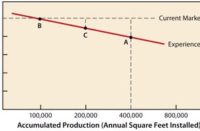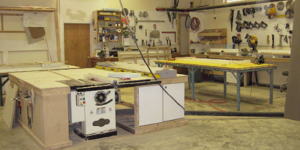The path to success is riddled with pitfalls of uncertainty. However, the decorative concrete industry is full of potential and reward, and numerous tools are available to help those who want to build a long-term reputable business. A solid foundation for such an adventure is not only important, it’s mandatory.
Unfortunately, however, the formula for success used by most individuals in our business falls short.
Far too many skilled decorative professionals falsely believe their success hinges on their expertise. Most feel the more they know about concrete counters, polishing or staining, the better their odds are of being viewed as successful artisans or, maybe better put, successful artisanal business owners. Sure, expertise is important, but it’s only a fraction of what you need. The rest is our focus today.
The ability to sustain your business long enough to prove your value is the tallest hurdle for breaking into or transitioning into the decorative concrete trade. My goal is to reduce the size of this hurdle by suggesting actions beyond the effort and cost of attending yet another product-sponsored deminar.
Step 1: Choose your specialties wisely
Not often do you hear a successful decorative concrete owner say they stumbled into their particular trade. Most spent many hours dissecting decorative options and opportunities, even to the point of testing the waters, before investing additional effort or capital. Choosing to offer concrete countertops over polished concrete, by example, could mean less of an investment at first but far less profit in the long run. Also, choosing to stain interior concrete over stamping exterior hardscapes could seem like less effort but, again, ultimately be less profitable.
The first step in determining the best decorative services to offer is to compare the amount of necessary start-up effort and capital with earning potential. The only way to determine earning potential is to research the going rate in your locality. A low price per square foot usually means abundant local competition or competition with poor bidding habits. A higher-than-average rate usually means less competition and a trade that may be a good choice. This has nothing to do with how good you or your crew is at any type of decorative concrete.
Timing is the most overlooked necessity in today’s business decision process. Part of choosing wisely is recognizing good timing from bad, risky timing from stable. Run the proposed plan by trusted professionals such as your CPA, lawyer and banker.
The people on your team of professionals will also view risk and reward from an objective viewpoint, usually offering sound advice from a different perspective. Pick your professional team wisely and trust their advice.
Step 2: Test the waters
Used equipment publications and classifieds are full of contractors who failed to properly test their local waters. They jumped in without researching things such as profitability, leverage risk, local building trends and learning curve. The plan sounded good in theory, but they quickly became overwhelmed when their plan turned to action.
There should be few major surprises if a plan’s foundation is properly placed. Testing the waters is an opportunity to see how efficient your crew is at any particular type of decorative concrete. (Please remember that efficiency will improve as you and your crew become more experienced.)
I’m convinced it takes at least three attempts at a type of decorative concrete to see if it is a good fit for your business. The first attempt is usually chaotic, unorganized and nerve-racking. The second attempt is better. The third attempt should supply enough information to see if this is something worth taking on or not. My advice is to rent the equipment necessary during this fact-finding mission until you are 100 percent satisfied the craft is a good fit for you.
Will the proposed decorative task require more manpower and equipment? Will the proposed task require additional insurance and risk? Is the proposed task seasonal in your area? All these questions are worthy of consideration before taking the plunge.
Step 3: The plunge
As I view life from my third decade in the decorative concrete trade, I have more hindsight than some. Looking back, I recall the excitement of plunging into another phase of decorative concrete or expanding an existing implementation. One big step came many years ago when we added an outside salesman to our business in order to help promote and organize our 10-man crew. Honestly, it was more expensive than I anticipated, yet the expansion also proved to be more profitable than my team of professionals anticipated, at least over the long term.
My point is that the plunge rarely goes exactly as planned in every detail. The ability to calmly accept challenges and move forward is vital. Not every project will be perfect. Some customers will be elated at job’s end, and some will offer constructive criticism regardless of your level of effort. Part of accepting the challenge of plunging into a mysterious new phase of decorative concrete is making a commitment to do whatever is necessary to succeed.
One final tip: It’s not recommended you evaluate a decorative concrete project the minute it’s complete, especially soon after you’ve taken the plunge. Some projects are tiring, and the time to evaluate what was learned, or improvable, is not while you are exhausted or worn out. Recuperate first, then critique what you did and identify what need improvement.















